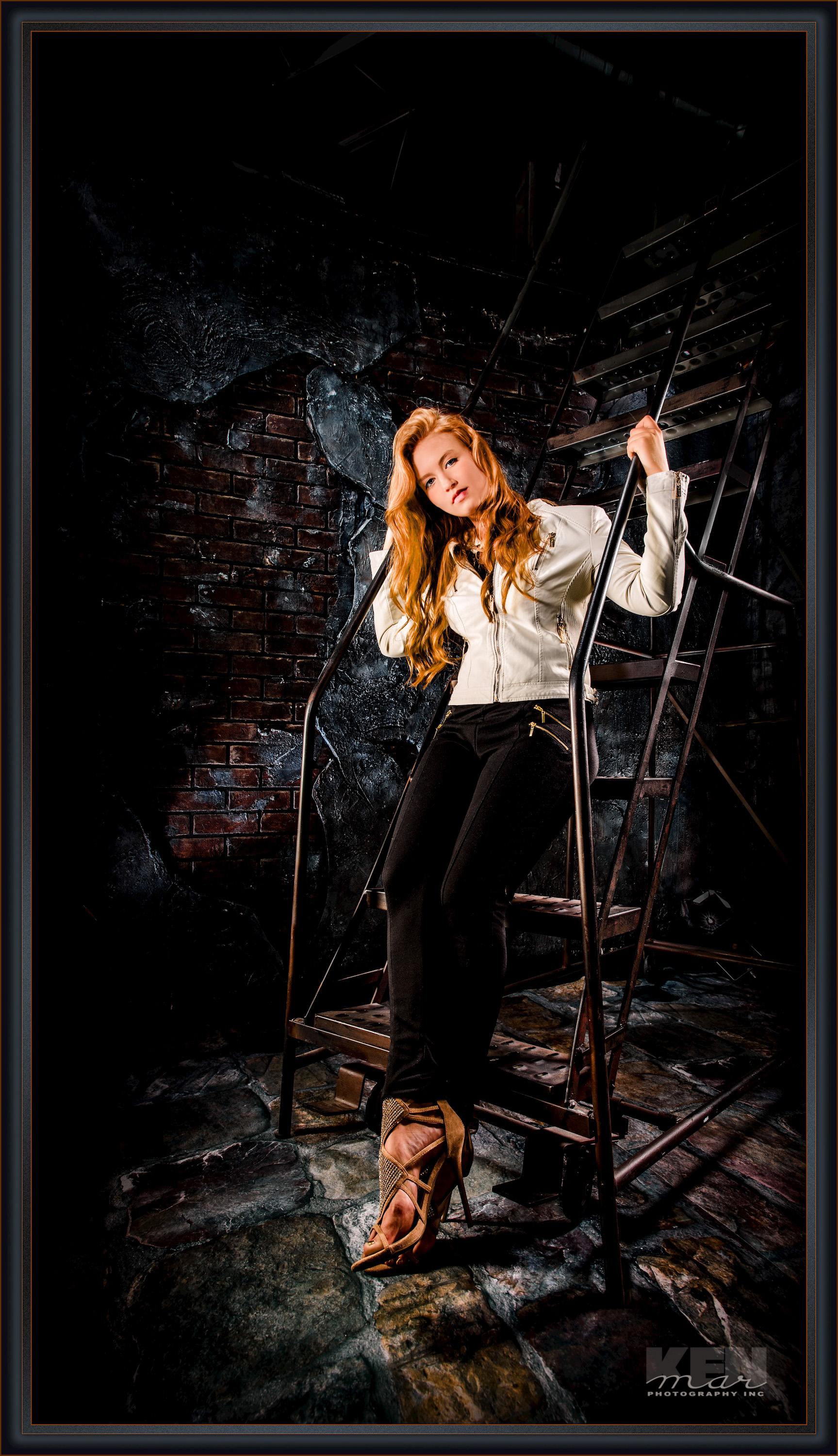I believe that a KenMar portrait can influence your life for the better. I create confidence you can hang on your wall.
A look at the philosophy of a portrait artist:
At one time photography was the realm of men who understood physics, mechanics, and chemistry. My dad’s old portrait camera is on display in my front room. It is a huge box with black bellows supported by 4x4s and wheeled on 4′ castors. A mysterious black cloak covered the photographer.
A progression of cameras like the Kodak Brownie, the Instamatic, the 35 mm and the point and shoot lowered the threshold of camera mystery and mastery. Now with digital cameras, the threshold is as flat as the floor you’re standing on.
The history of cameras is not the history of professional portraiture.
Digital cameras give us the illusion that quantity and convenience could increase the possibility of quality; that too many choices and instant gratification could somehow compensate for it. It’s the type of thinking that is so prevalent in the food industry. If you can’t give them good food just give them more food quicker. Look at what that has done for our collective waistline and health. But that’s how capitalism works. You give the market more options and give in to the nature of desire.
The digital camera and the market now attempt to compete with the professional.
From the I-can-do-it-too photography wannabes, part-timers and the mass-produced WallMart type, these pressures are eroding the professional’s market. These phenomena have confused the ability to take pictures with the ability to make them.
Experience is the breeding ground that turns talent into ability.
It’s this experience that our clients pay for when they come to us. The practiced art creates the sensitivity to the client and turns personalities into portraits. The portrait artist creates an environment that allows personality to bond to canvas and paper. It is the experience of making a portrait that is the art that cannot be replaced by quantity, speed or any piece of technology. There are a million nearly indecipherable things people do to tell you who they are. Our real job is to use our experience to decipher those things and turn them into a portrait. That’s the magic. Knowing how to operate a camera is nothing compared to that.
Those who cannot sense the difference between the things I’ve mentioned will be happy to shop on price alone.
Their choices are made simple by their simple minds and needs. Those who can discern those differences are overwhelmed by their choices. Understanding their plight in finding and dealing with us is the key to satisfying these patrons. They keep our art alive. They are precious resources.
A story goes:
The artist Picasso was enjoying lunch at a cafe In Paris when a wealthy socialite approached him and insisted that Picasso do a drawing of her. She let him know that money was no object. Picasso obliged the woman immediately by finding a pencil and paper and within three minutes handed the woman a splendid drawing. The woman was delighted and asked Picasso what she owed him. Picasso was a very well known artist by this time and asked several thousand dollars for the piece. Stunned, the woman asked how the artist could charge that much for something that only took him three minutes. Picasso replied, “Madame that drawing took me all my life.”
The portrait artist has only a short time to capture the personality of the subject.
Experience is what allows them to do that. In that brief moment, they exchange faith with their patron and create the magic that is portrait art. The artist believes in their creativity when they feel the faith of their subject. When the patron also believes in the magic there is no limit to the priceless art that they can create together.
These portraits are truly priceless in that they hold, perhaps more than anything else, the meaning of a man. In a quality portrait, you can see the past, the potential, and the personality.
That is what converts these pieces of paper and canvas into the priceless artifacts that are collected and handed down from generation to generation. When your mother shows you a photograph and says, ” This was your grandfather when he was in high school” and not “This is a picture of your grandfather in high school,” she makes a statement about the nature of portraiture that all portrait artists already believe.

